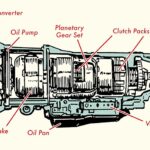The P1678 Code is a diagnostic trouble code (DTC) related to a malfunction in the fuel temperature sensor “B” circuit. This code indicates an issue with the sensor’s ability to accurately measure the temperature of the fuel, potentially affecting engine performance and fuel efficiency. This article delves into the P1678 code, outlining its symptoms, potential causes, and solutions to help you understand and address this issue.
What Does the P1678 Code Mean?
The P1678 code specifically points to a problem with the range/performance of the fuel temperature sensor “B” circuit. The fuel temperature sensor plays a crucial role in the engine management system by providing data to the Engine Control Module (ECM) or Powertrain Control Module (PCM). The ECM uses this data to adjust fuel injection and ignition timing for optimal performance and emissions control. A faulty signal from this sensor can lead to various driveability problems. The “B” designation typically refers to a specific sensor location or a secondary sensor in a dual-sensor system; consult your vehicle’s specific repair manual for precise location information.
Symptoms of a P1678 Code
While the illumination of the check engine light is the most common indicator of a P1678 code, other symptoms may accompany it:
- Difficulty Starting: The engine may crank but struggle to start, especially in cold weather.
- Rough Idle: The engine may run unevenly or roughly at idle.
- Poor Fuel Economy: You might notice a decrease in miles per gallon.
- Hesitation or Stalling: The engine may hesitate or stall during acceleration or driving.
- Increased Emissions: The vehicle may fail emissions testing due to improper fuel mixture.
Common Causes of a P1678 Code
Several factors can contribute to a P1678 code:
- Faulty Fuel Temperature Sensor: The most common culprit is a malfunctioning sensor itself. It might be damaged, corroded, or simply worn out.
- Wiring Problems: Damaged, corroded, or loose wiring in the sensor circuit can disrupt the signal.
- Short Circuit: A short circuit in the wiring harness can also trigger the code.
- Poor Electrical Connection: A loose or corroded connector at the sensor can cause a poor signal.
- Fuel Contamination: Contaminated fuel can damage the sensor.
- ECM/PCM Issues: In rare cases, a problem with the ECM/PCM itself might be responsible.
Diagnosing and Fixing a P1678 Code
Diagnosing a P1678 code requires a systematic approach:
- Retrieve the Code: Use an OBD-II scanner to confirm the P1678 code and check for any other codes present.
- Inspect the Wiring: Visually inspect the wiring harness for damage, looseness, or corrosion. Pay close attention to areas near the fuel temperature sensor and the ECM/PCM.
- Test the Sensor: Use a multimeter to test the sensor’s resistance and voltage according to manufacturer specifications.
- Check the Connector: Ensure the connector is securely attached and free of corrosion.
- Replace the Sensor: If the sensor is faulty, replace it with a new one.
- Repair Wiring Issues: If wiring problems are found, repair or replace the affected wires.
- Clear the Code: After repairs are made, clear the code with an OBD-II scanner and verify the problem is resolved.
Conclusion
Addressing the P1678 code promptly is crucial to prevent further engine damage and ensure optimal performance. While replacing the fuel temperature sensor is often the solution, thorough diagnostics are essential to pinpoint the exact cause. If you lack experience in automotive repair, consulting a qualified mechanic is recommended. They have the necessary tools and expertise to diagnose and resolve the issue effectively.

